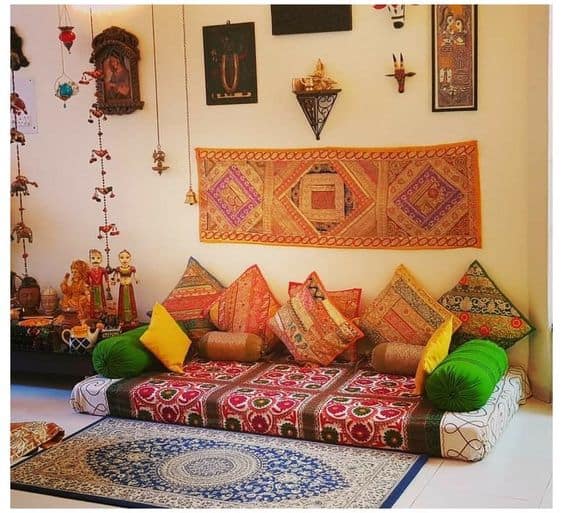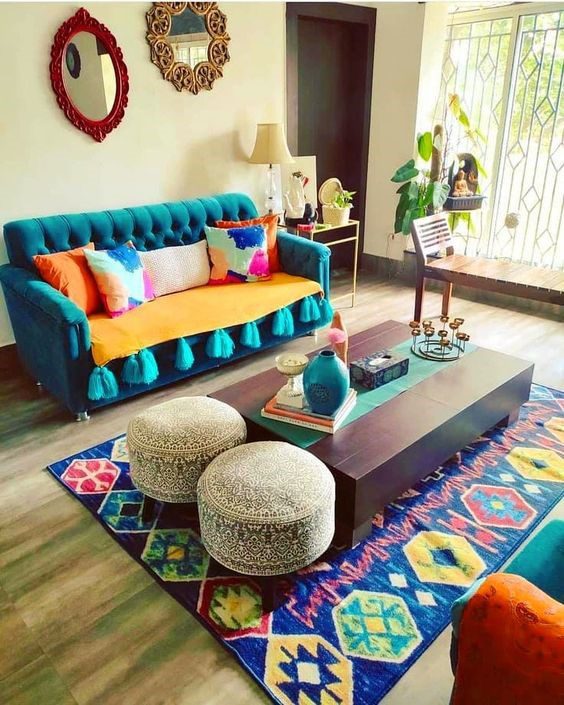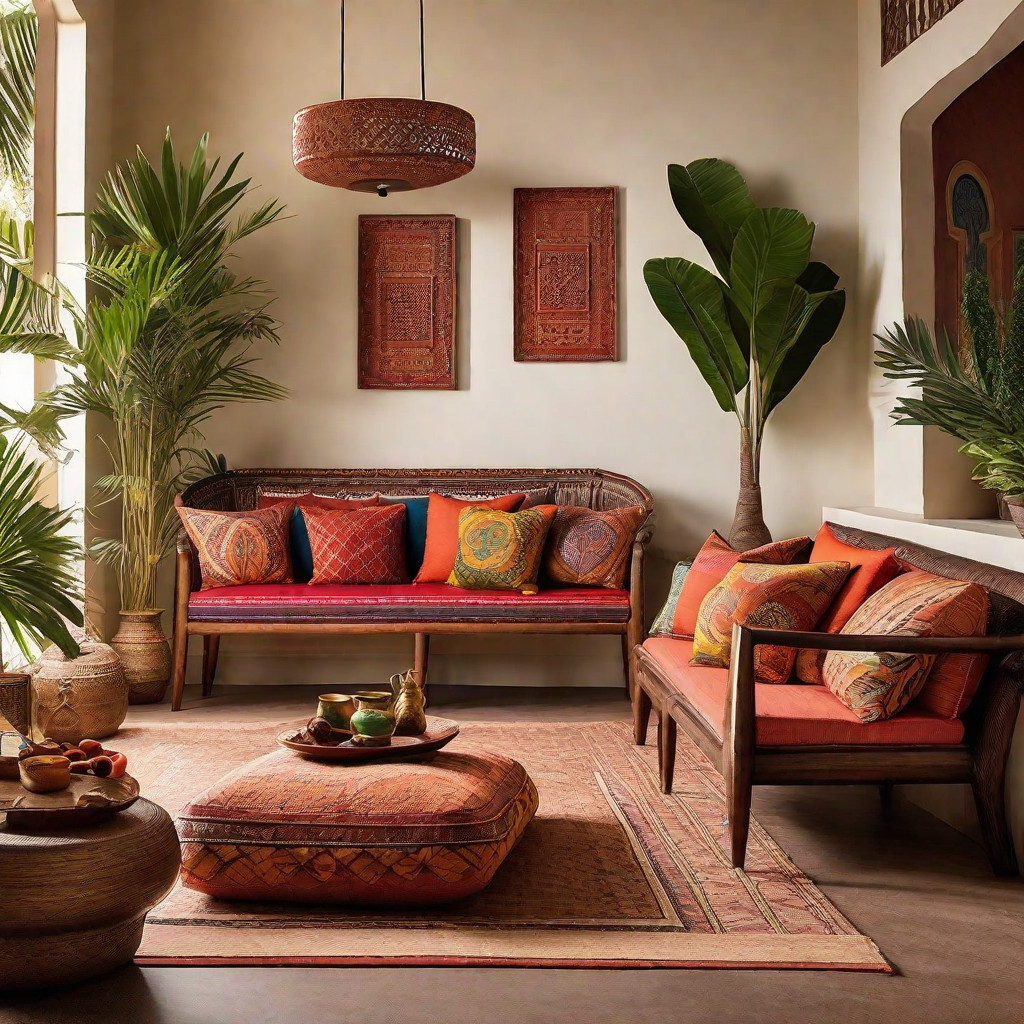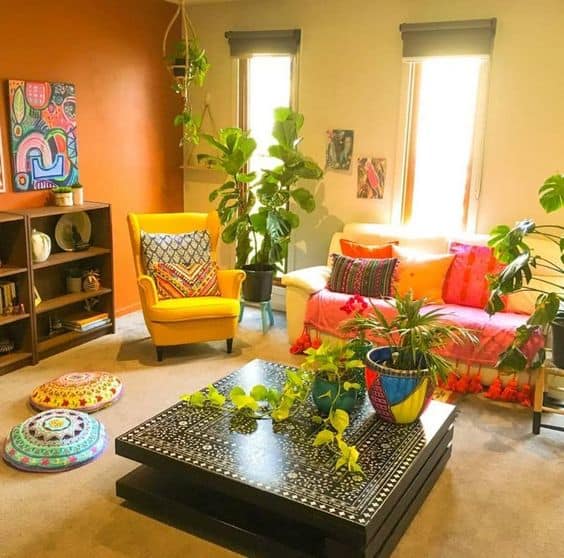Introduction to Indian House Decor
House decor is more than just aesthetics; it reflects one’s personality, culture, and lifestyle. As someone deeply connected to my Indian heritage, I’ve always found immense beauty in traditional Indian house decor. From the vibrant colors to intricate designs, it offers an eclectic mix that can transform any space into a warm and inviting home. This article will explore various aspects of Indian house decor, including styles, elements, and practical tips to incorporate them into your living space.
The Essence of Indian Decor
Indian decor is characterized by its rich history and diversity. Each region in India has its unique traditions and styles, which contribute to a beautiful tapestry of decor choices. The key elements include:
- Color Palette: Bright, bold colors like red, yellow, saffron, and green dominate.
- Textures: Incorporation of different textures through textiles, wall hangings, and furniture.
- Traditional Crafts: Use of handcrafted items from various regions, including pottery, woodworking, and textiles.
- Symbolism: Decor often includes symbols of good luck and prosperity, such as elephants and lotus flowers.
Popular Indian Decor Styles
Indian decor is not monolithic; it varies significantly across the subcontinent. Let’s take a closer look at some popular styles:
1. Traditional Indian Decor
This style features intricate woodwork, ornate carvings, and traditional furniture. Colors are typically warm and earthy, with lots of decorative elements like brass and copper artifacts. Living in a traditional Indian home invokes a sense of history and culture.
2. Contemporary Indian Decor
Blending modern design with traditional elements, contemporary Indian decor uses clean lines and minimalist aesthetics while still incorporating cultural symbols. Think modern furniture mixed with ethnic textiles and art.

3. Rustic Indian Decor
This style emphasizes natural materials such as wood and stone, creating a cozy and earthy vibe. Rustic decor often includes vintage furniture pieces and handmade crafts, reflecting the roots of Indian craftsmanship.
4. Bohemian Indian Decor
A vibrant mix of patterns and colors defines Bohemian decor. This eclectic style allows for creativity, with textiles, wall hangings, and decor items collected from travels. It’s a perfect way to express personal stories and experiences.

Key Elements of Indian House Decor
To achieve an authentic Indian decor look, consider the following key elements:
1. Textile Wonders
Indian textiles are famous for their intricate designs and vibrant colors. Incorporate items like:
- Rugs and Carpets: Handwoven dhurries or Persian carpets add warmth and character.
- Cushions and Throws: Use colorful embroidered cushions or throws to enhance comfort.
- Bedspreads: Traditional quilts (rajasthani or kantha style) can serve as stunning focal points.

2. Art and Craftsmanship
Invest in local artworks and crafts. Consider:
- Pots and Planters: Hand-painted ceramic pots can brighten up corners.
- Wall Hangings: Tapestries and traditional paintings like Warli or Madhubani add cultural depth.
- Wooden Carvings: Intricate carvings can be used in furniture or as decorative pieces.
3. Furniture Choices
Traditional Indian furniture often has a rustic charm. Some types to consider are:
- Chests and Trunks: Use vintage trunks as coffee tables or storage options.
- Low Seating: Incorporate low wooden seating (like a ‘chowki’) for an authentic feel.
- Carved Cabinets: Display your collection of artifacts or books in beautifully carved wooden cabinets.

Practical Tips for Indian House Decor
Incorporating Indian house decor into your home doesn’t have to be overwhelming. Here are some practical tips to consider:
1. Start Small
If you’re new to Indian decor, start by adding a few elements at a time, like a colorful cushion or a piece of artwork. Gradually, you can build up a cohesive look.

2. Mix and Match
Don’t be afraid to blend different styles. For example, you can combine modern furniture with traditional artifacts to create a unique aesthetic that speaks to you.
3. Use Nature
Incorporate indoor plants to bring life and vibrancy to your space. Use terracotta pots or wicker baskets for a more earthy feel.

4. Storytelling Through Decor
Let your decor tell a story. Use items collected during travels or significant life events. This adds a personal touch and enriches your home’s atmosphere.
Comparison Table of Indian Decor Styles
| Style | Key Features | Pros | Cons |
|---|---|---|---|
| Traditional Indian | Intricate carvings, rich colors, vintage textiles | Timeless appeal, cultural richness | Can feel heavy and crowded |
| Contemporary Indian | Minimalist design, bright accents, clean lines | Modern feel, easier to incorporate | May lack cultural depth |
| Rustic Indian | Natural materials, vintage pieces, cozy vibe | Warm and inviting atmosphere | Can be limiting in color palette |
| Bohemian Indian | Eclectic mix of patterns, colorful decor | Highly personalized and expressive | Can risk looking cluttered |
Why Choose Indian House Decor?
Indian house decor is not just about aesthetics; it’s a way to connect with nature and culture. Here are some compelling reasons to consider this style for your home:
1. Cultural Connection
Embracing Indian decor allows you to celebrate and honor your heritage or simply appreciate its beauty.
2. Durability
Much of the furniture and decor in Indian styles is made with solid materials that stand the test of time, offering lasting value.
3. Unique Character
Each piece often tells a story, adding a unique character to your home that mass-produced items lack.
FAQs about Indian House Decor
1. What are some simple ways to start with Indian decor?
Start with textiles such as cushions or throws, introduce a few decorative artifacts, and consider a color scheme that aligns with Indian aesthetics.
2. How can I incorporate modern elements into Indian decor?
Blend contemporary furnishings with traditional items. Focus on a cohesive color palette and carefully select statement pieces that tie the styles together.
3. Are there specific colors I should use in Indian decor?
Bright colors such as red, yellow, orange, and green are popular, but you can also use earthy tones and pastels for a more subdued look. Balance is key.
4. Where can I find authentic Indian decor items?
Look for local artisans, crafts fairs, or online marketplaces like Etsy and Amazon Handmade. Many regions also have cultural stores specializing in handicrafts.